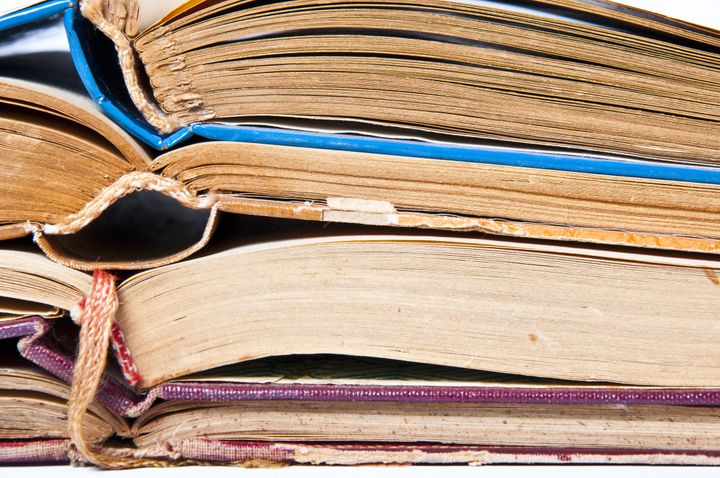
At a moment when cultural trend-watchers are predicting the imminent demise of the traditional book in lieu of digitization, the American Antiquarian Society (AAS) is honoring the strength of print as it celebrates its 200th anniversary. Founded in October 1812 in Worcester, Massachusetts by patriotic printer Isaiah Thomas (1749-1831) to preserve the records of the young nation, the AAS is America's first national historical organization. Today it also serves as a major independent research institution whose library is open to all serious researchers. The AAS also offers public tours and programs and hosts educational events for teachers and school children.
Behind the stately pillars of this handsome Georgian archive in central Massachusetts, scholars, researchers, authors and teachers delve into the world's largest collection of materials printed before 1821. Among them are editions of famous American literature, political cartoons, antique pornography, histories of the fifty states, and the eighteenth century equivalent of junk mail.
Described by historian Gordon S. Wood, winner of the Pulitzer Prize and Bancroft Award as "the greatest collection of early Americana in the world," the AAS houses four million books, pamphlets, broadsides, newspapers, periodicals, sheet music and graphic arts from the seventeenth century through 1876. The breadth and depth of the collection had inspired hundreds of important works, among them 78 Pulitzer Prizes written by its members. Within its 984 elected members are literary luminaries Ken Burns, David McCullough, Nathaniel Philbrick, Doris Kearns Goodwin, Jill Lepore, Gordon Wood and Henry Louis Gates.
Among the AAS's vast holdings are the remains of the antique American library of the Rev. Drs. Increase, Cotton and Samuel Mather; the 1640 The Whole Booke of Psalmes, commonly known as the Bay Psalm Book, the first book published in British North America; the country's first printed Bible of 1663 written in the Algonquian language of the Natick Indians by the Reverend John Eliot; and all but two of Paul Revere's engravings. Symbolic of the AAS's cultural diversity are three copies of the July 2 and 4, 1863 Daily Citizen of Vicksburg, Mississippi which are printed of the back of wallpaper because of paper shortages in the South during the Civil War.
Ironically, an earlier war -- the War of 1812 -- impelled Isaiah Thomas, printer of the patriotic Massachusetts Spy, to found the AAS. Determined to protect the library of colonial, Revolutionary and early republic's books, newspapers, broadsides, rare English and Continental books Thomas had painstakingly collected and stored in his Worcester home, he submitted a petition to the Massachusetts legislature in autumn 1812. On October 24th, Massachusetts Governor Caleb Strong signed an act that recognized "the collection & preservation of the Antiquities of our Country, and of curious & valuable productions in the Art & nature, have a tendency to enlarge the sphere of human Knowledge, aid the progress of Science to perpetuate the history of moral & political events, and to improve and interest posterity."
By November 19, the first meeting of the American Antiquarian Society had convened at the Exchange Coffee House in Boston and elected Thomas its president. At 63 years of age, Thomas, editor and publisher of the Massachusetts Spy, and the foremost patriotic printer of his generation, stood at the head of a publishing empire based upon printing, politics and civil affairs. On April 15, 1775, he smuggled his press out of Boston before British authorities could shut it down, relocated it to distant Worcester and began churning out new editions of the Spy. In 1810, after decades of experience with newspapers and books, Thomas composed The History of Printing in America, a two-volume collection of printers' biographies and accounts of newspapers that sought to authentically preserve the history of "English America."
In 1983, Thomas's interest in the history of printing led the AAS to initiate a Program in the History of the Book in American Culture which includes annual lectures, workshops, seminars and residential fellowships. In 1955, the AAS, an early pioneer in photographic reproductions of the materials in its collection, began working with the Readex Microprint Corporation to microfilm nearly all of its non-serial American publications from 1639-1820. The resultant series, Early American Imprints, contains the text of 90,000 books, pamphlets, almanacs, and broadsides. More recently the AAS has digitized more than twelve million pages which are available at its library as well as at 7,500 American and international libraries which subscribe to its digital data bases.
So it seems that the printed book is far from dead but rather, exudes a treasured record of the past, whose six-hundred year history will not only endure but likely appreciate in time. "We're the library of record for the nation," said Ellen S. Dunlap, AAS president. "While we are rapidly digitizing our vast collections, we always keep the original. Nothing can replace the actual object for rare books and manuscripts tell multiple stories that can only be understood when one can see and touch the bindings, the paper and the impressions of the type on that paper. Additionally, the physicality of the object often connects us emotionally to the past and the people who inhabited that time in a way that cannot be obtained through a facsimile."
The library is open free of charge on Mondays, Tuesdays, Thursday and Friday from 9:00 a.m to 5:00 p.m. and on Wednesday from 10:a.m. to 8 p.m., except legal holidays. For more information, see the AAS website www.americanantiquarian.org.
Earlier this year, the AAS commissioned Philip F. Gura, the William S. Newman Distinguished Professor of American History and Culture at the University of North Carolina at Chapel Hill to write The American Antiquarian Society, 1812-2012: A Bicentennial History. As the title implies, it's a fascinating history of the AAS -- a book that's best read in print!